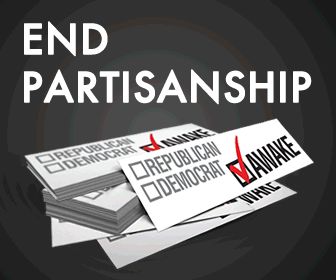Voter Turnout Drops During 2012 Primary Season

Historically, turnout in primaries and caucuses have always been low. The highest turnouts are typically during the years where the presidential races are most competitive, such as 1988 and 2000, but even then turnout is only highest during the early primary contests and gradually dwindle as the races appear, to the voters, to be settled.
Despite the most competitive years, participation in the primary election season during presidential elections has been on a gradual decline. The bumps we saw in 1988 and 2000 were only about two percentage points higher than the election before and then drop again four years later.
What made 2008 so extraordinary was that there was an overall turnout rate higher in every primary than any election since 1972 and the average participation across the country was eight percentage points higher than subsequent elections.
Other factors can help boost turnout, including an electorate that is weary of war. One of the highest voter turnouts during a primary election season was in 1968. Back then, only about a third of the states had primaries or caucuses, but voter participation was high in those that did. One of the key reasons was the Vietnam War.
Forty years later, the United States was engaged in two military conflicts. On top of that, the country was experiencing recession, unemployment was on the rise, and Americans were looking for change in Washington. Add to that the highly contested race in the Democratic Party that pitted the first viable female presidential candidate against the first viable black presidential candidate.
. Connecticut had 20 percent of the state electorate show up for their primaries and it was considered a record high turnout. Forty states plus Washington, D.C are primary election states. Twenty-four of these states reported record turnouts. Three of them had participation numbers over 40 percent.Four years later, Americans are still uncertain about the current state of the economy, unemployment is still above 8%, and Republicans were supposed to come out in droves to send a message to the current administration. Instead, the turnout numbers this year returned to the abysmal levels we are accustomed to.
The presidential race sets the tone for the primary season. Democrats aren’t as excited about Barack Obama as they were in 2008 and no feasible candidate challenged him for the party’s nomination. The GOP field never really satisfied Republicans. The politicians people wanted to get into the race didn’t. There were so many debates, front runner shifts, and so much mudslinging many voters were ready for the nomination process to be over by the end of February.
Many of these primaries across the country have more on the line than just committing delegates to presidential candidates. There are state and local party nominations to vote on, as well as congressional and senate seats. Primaries are important because they decide who the candidates will be in the general election for races that have an impact on all levels of government.In Texas, total voter participation among registered voters in the 2012 primaries was 16.33 percent. Approximately 71.47 percent of the voting age population was registered to vote. This number will rise for the general election in November, but it is difficult to speculate on how much. In 2008, the number of registered voters between the primaries and the general election increased by just under five percentage points, but the percentage of registered voters that participated in the primaries was close to double that of this year’s turnout.
GOP candidates in statewide races only needed about 5.76 percent of total registered voters to win their race and avoid a runoff. To win the Democratic nomination in any race a candidate only needed roughly 2.57 percent. Texans voted on party nominations for elected positions in the state’s Executive Branch, courts, Board of Education, congressional offices, and an important senate race -- not to mention seats in the Texas Legislature.
Most political pundits will agree that primaries are an important part of the democratic process. Why don’t voters feel the same way?
Two of the biggest factors that drive voter participation in any election, whether it’s primary or general; mid-term or presidential, is perception and motivation. The media helps drive public perception and perception helps drive motivation.
New Hampshire is the first primary of the year and generally gets a substantial amount of media coverage. The media covers the early contests much more extensively in presidential races than those that come later in the primary election season. The state also typically has the highest turnout of any other primary.
If the media is not focused on it then people generally don’t care.There have been a number of solutions proposed to help boost voter participation in primary election seasons. 2008 was an exceptional year in voter turnout because the Democratic race lasted until the end and kept voter interest up. Rolling out primaries instead of clustering early contests together (essentially what creates Super Tuesday) is one idea. Races would last longer and each state would get an increase in media coverage.
Voters don’t have much of a reason to be enthusiastic. People flocked to polls four years ago under promises of change to the status quo, and change hasn’t happened. Voters collectively feel more disenfranchised today than they have in decades.
We have a Congress that won’t do anything because of partisan gridlock. We have two sides conveying a message to voters of why they should hate the other side instead of why people should vote for theirs. They think the status quo can’t be changed and the media hasn’t done anything to help change this.There isn’t just one solution to boosting voter participation in both primary and general elections, but a better informed electorate is a step in the right direction. Voters are motivated by perception, and if the media puts a heavier emphasis on the importance of these primaries then public interest is likely to be high.





